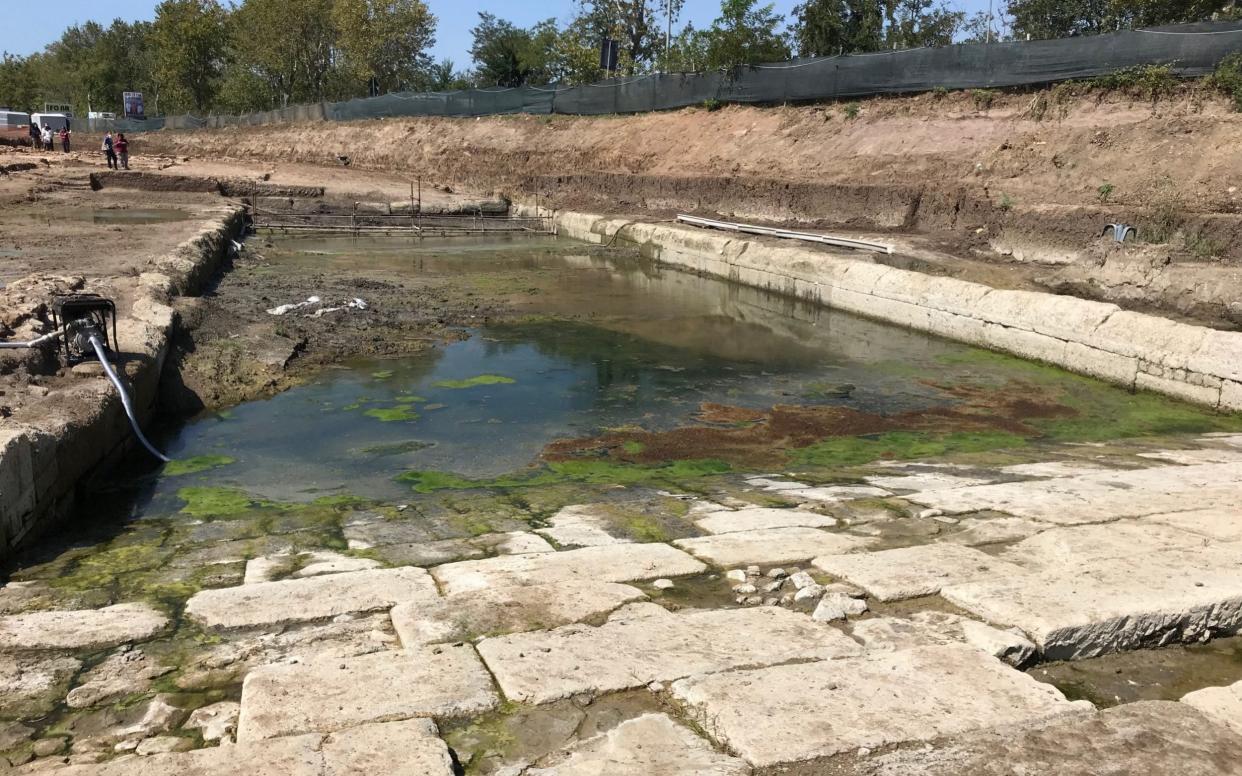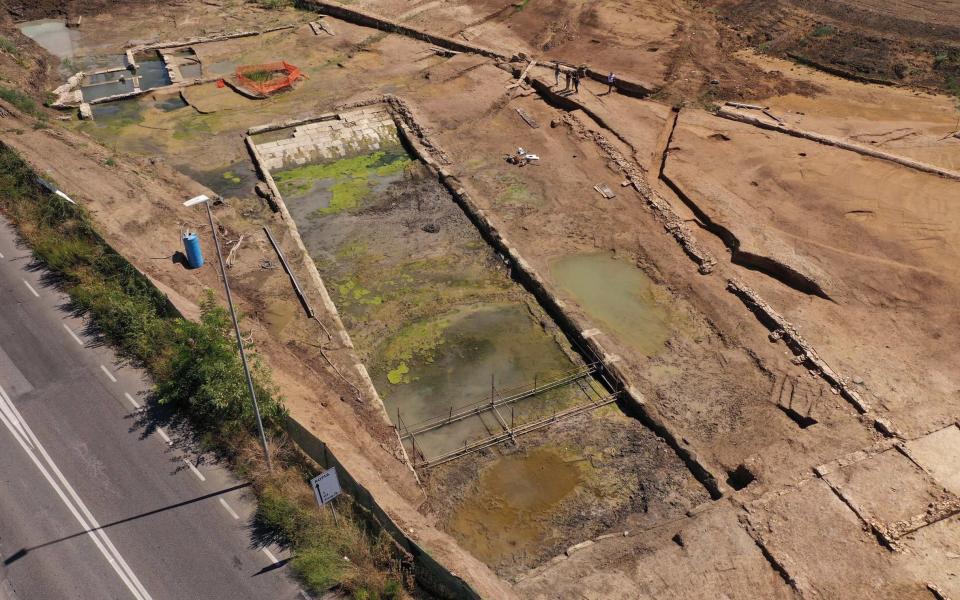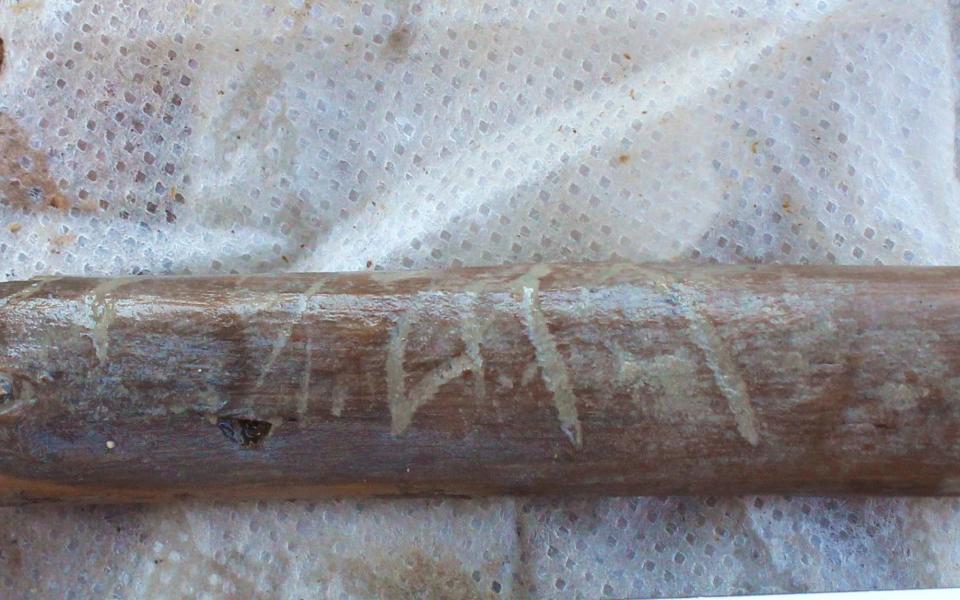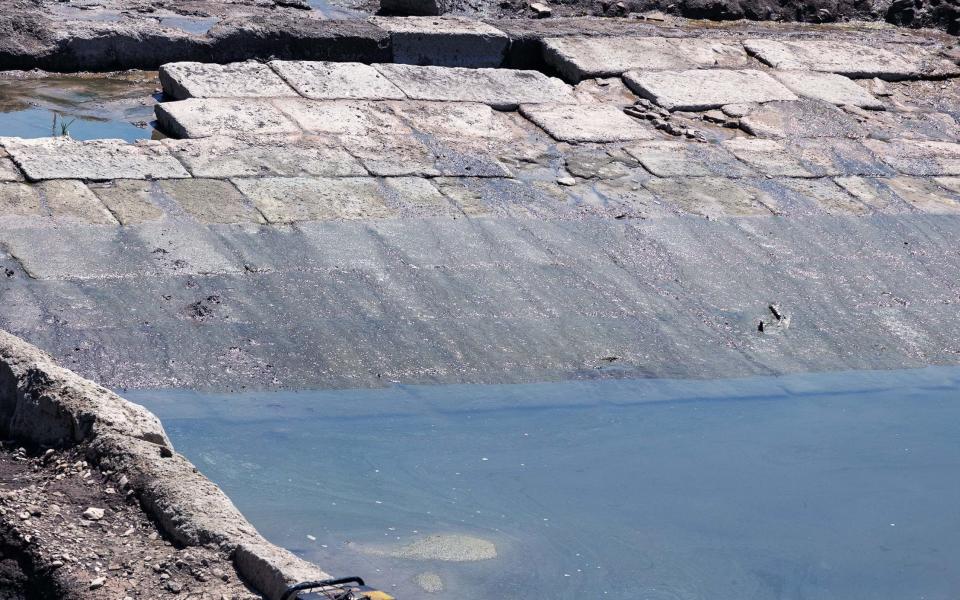Archaeologists find ancient stone pool outside Rome but have no idea what it was for

Italian archaeologists have been left baffled by the discovery of a vast sunken pool found just outside Rome.
The pool, which has sides made of large stone blocks and dates from the fourth century BC, is more than 150ft long and 40ft wide – about the size of an Olympic swimming pool.
Unveiling the find after more than a year of digging, experts said they are unsure what its purpose was, describing it as “an enigma”.
“It’s very rare to make a discovery of a structure like this and to not know what it was used for,” said Emanuele Giannini, one of the archeologists who worked on the dig.

Adding to the mystery is the discovery of a tiny piece of wood inscribed with three letters in the Etruscan language. The inscription spells ATI, which may be part of a person’s name.
The wood was preserved intact because it was buried in thick clay, which deprived it of oxygen and prevented it from decomposing.
“This was a period in which some Romans were using Etruscan and Greek as well as Latin,” said Dr Giannini, the technical director of the excavation.

The site is about 200 yards from the Tiber River and experts initially thought it could have been a shipbuilding yard.
But as they excavated the pool they found no channel linking it to the river and so discounted that theory.
Another idea was that it could have been a pond for rearing fish, but it is much larger than most Roman fishponds and does not bear the normal distinctive features, such as protected areas for the fish to lay their eggs.
At one end of the basin is a broad ramp made of stone slabs, which would have provided an easy entry and exit point.
The ramp bears no sign of the grooves usually left by horse-drawn carriages, suggesting that it was used only by people to enter and exit the water.

That led archeologists to think it may have been a swimming pool, but it is not close to a town or village and the bottom of the pool is made from beaten earth, rather than marble or stone, which were used in the construction of most Roman baths and pools.
That left archeologists with one further hypothesis – that the pool was the focus of some sort of religious cult. Even that theory has weaknesses, however.
It is much bigger than most similar sacred pools and no evidence of a temple has been found nearby.
“It’s very strange, a real enigma,” said Paolo Scarpitti, an archeologist who is analysing the ancient wood found at the dig.
The pool is located roughly half-way between Rome and Ostia, the port which supplied wheat, olive oil, wine, slaves and other commodities to the capital.
It was used until the 1st century AD, when it was buried by detritus after the Tiber flooded its banks.
“Once again, Rome has presented us with a surprise,” said Daniela Porro, a senior cultural heritage official for the city. “It could have had a sacred religious purpose but we are still working to try to understand exactly what it was.”
Barbara Rossi, the scientific director of the project, said: “We hope that the study of the many objects that have come to light, including pieces of wood, terracotta objects, metal artifacts and inscriptions, will reveal the secrets of this extraordinary corner of ancient Rome.”

